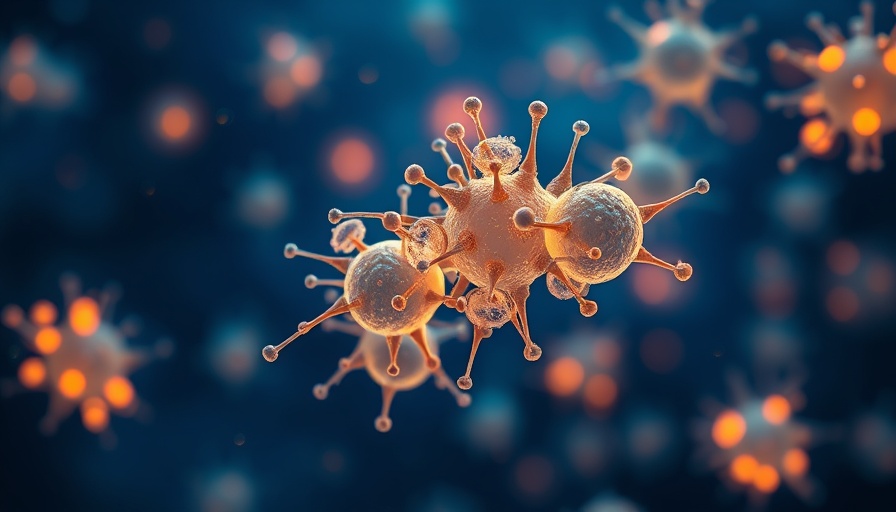
The Surprising Connection: Gut Microbiome and Heart Health
Every year, more than 805,000 Americans experience a heart attack, a condition traditionally attributed to high cholesterol, elevated blood pressure, and lifestyle choices. However, recent research reveals a lesser-known but critical predictor of this serious health issue—the gut microbiome. This complex consortium of trillions of bacteria living in our intestines not only facilitates digestion but plays a pivotal role in overall health, including cardiovascular function. New findings indicate that an imbalanced gut microbiome could significantly increase the risk of heart attacks, shifting how we understand heart disease prevention.
Understanding Gut Microbiome Patterns
A study recently published in the European Medical Journal showcases groundbreaking efforts to leverage gut microbial patterns as predictive tools for adverse cardiovascular events (MACE) in individuals with coronary heart disease (CHD). The research forms part of the extensive CORDIOPREV study, which investigates dietary and lifestyle factors that may affect heart health.
Researchers concentrated their analysis on 679 high-risk CHD patients, all of whom had previously experienced a coronary event at least six months prior to the study. Their goal was to uncover which of these individuals might be on track for a subsequent event, even while adhering to conventional care practices.
Ten Bacterial Strains: The Heart Attack Predictors
Through meticulous analysis, the researchers identified ten key bacterial strains linked to heart attack risk. By assessing the presence or absence of these bacteria, they developed an algorithm—a gut microbiota-based risk score—that effectively gauges the likelihood of future cardiovascular issues in participants.
Patients demonstrating a high score on this risk model exhibited several concerning health metrics, including increased rates of diabetes, greater waist circumference, elevated blood pressure, and poor blood sugar regulation. Interestingly, the study posits that the gut microbiome not only reflects cardiovascular risk but may also be a driving factor for it.
Gut Health Interventions: Promising Approaches
As this research clarifies the significant role of gut bacteria in heart health, it highlights potential intervention strategies. Natural approaches—including plant-based compounds such as berberine, dietary changes, and even fecal transplants—show promising effects in improving gut health, thereby reducing cardiovascular risks. These interventions highlight the importance of a balanced diet enriched with fiber and probiotics to promote a healthier gut microbiome.
The implications of this research extend far beyond mere predictions; they offer tangible strategies for individuals at risk. Patients can work with healthcare providers to incorporate these findings into personalized health plans that prioritize both gut health and cardiovascular wellness.
The Broader Impact: Understanding Microbial Health and Disease
It is essential to recognize that the connection between gut microbiomes and heart health is part of a larger narrative regarding microbial balance in the body. There’s growing acknowledgment that overall health may be intricately linked to the microbial profiles residing within us. This understanding opens avenues for more holistic treatment approaches focusing on nurturing beneficial gut bacteria and mitigating harmful strains.
Furthermore, recognizing the impact of lifestyle factors that disrupt gut health—such as processed foods, high sugar intake, and sedentary behavior—can empower individuals to take proactive steps toward better health outcomes.
Actionable Steps for Better Heart Health
For readers concerned about their heart health, here are key takeaway steps:
- Consult health professionals: Discuss gut health with a healthcare provider, especially if you have a history of cardiovascular issues.
- Focus on nutrition: Incorporate a diet rich in whole foods, antioxidants, and probiotics to nourish your gut microbiome.
- Engage in regular exercise: Physical activity can help balance gut bacteria and significantly impact overall heart health.
In conclusion, understanding the relationship between gut microbiome patterns and heart attack risk is increasingly valuable. As studies continue to evolve, those seeking to prioritize their heart health should consider the profound implications of their gut health.
By adopting dietary changes and exploring natural interventions, we can harness the power of our gut microbiomes, potentially facing a future where heart disease is no longer a looming threat.
 Add Row
Add Row  Add
Add 




Write A Comment